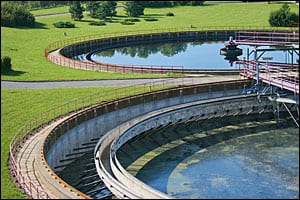BIOLOGICAL-BASED TREATMENT OF TAMAN TIMOR OXIDATION POND, JOHOR
UTM-CIAM helped JBIOTECH to improve water quality of Indah Water Konsortium (IWK) oxidation pond treatment plant.

Start a conversation
 If you’d like to work with us or just talk to any of our fantastic staff, contact us to get the conversation started.
If you’d like to work with us or just talk to any of our fantastic staff, contact us to get the conversation started.
THE PROBLEM
Oxidation pond techniques have become very popular with small communities because of their low construction and operating cost, as well as a significant financial advantage over other recognized treatment methods (Hussein and Mohammed, 2007). Oxidation ponds are stages in a water treatment plant in which solid effluent and organic matter are degraded anaerobically or aerobically. Both of anaerobic and aerobic ponds utilize indigenous microorganisms in their treatment to breakdown solid content of effluent and degrade organic matter into carbon dioxide, water, and cell biomass.
To improve the efficiency of the water treatment, beneficial microorganism based product may be added to the ponds to provide efficient removal and break down of solid content of effluent and pathogens, which are generally not sufficiently removed by oxidation ponds. The microbial approach can help in purifying heavily polluted water especially area that exposed to sunlight. However, the right amount of the product must be determined to ensure that sufficient dose is added, thus maintaining its efficiency and prevent excessive use.
Therefore, the aim of this study is to utilize a mathematical model to determine the optimal amount of beneficial microorganism product (mPHO) to be used in order to improve water quality of Indah Water Konsortium (IWK) oxidation pond treatment plant. The mPHO’s ability to photosynthesis and photometabolize many organic substances may help to reduce biochemical oxygen demand (BOD5), chemical oxygen demand (COD), total suspended solids (TSS), ammoniacal nitrogen (NH3-N), total coliform (TC), and E. coli (EC) content in wastewater
THE SOLUTION
UTM-CIAM helped JBIOTECH to develop a new mathematical model for wastewater treatment process of an oxidation pond which can be used to predict the interaction processes that occur naturally in the pond.
Team members: John R. Ockendon, Graeme Wake, Kok Lay Teo, Ryan Loxtan, Adérito Araújo, Basuki Widodo, Ali Hassan Mohamed Murid, Yeak Su Hoe, Akbar Banitalebi, Farhana Johar, Fuaada Mohd Siam, Kashif, Amir Syafiq Amir Hamzah, Siti Zulaiha Aspon, Hasniza Ramli, Noraha Markum, Noor Hazzarita Ab. Rahman, Siti Norazelah Hamdon, Nurul.
